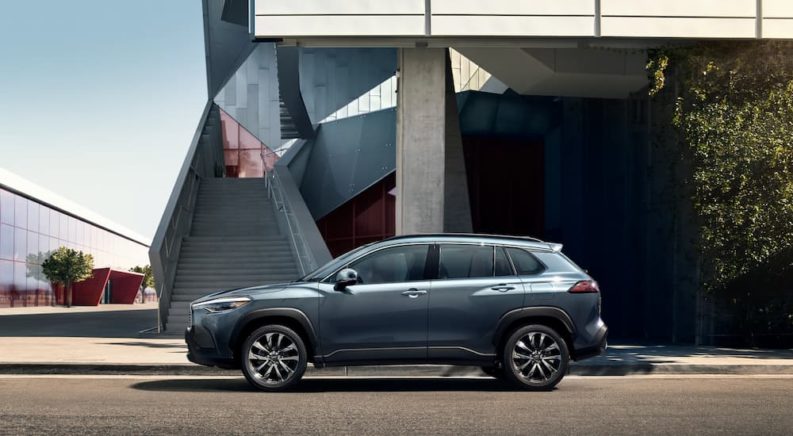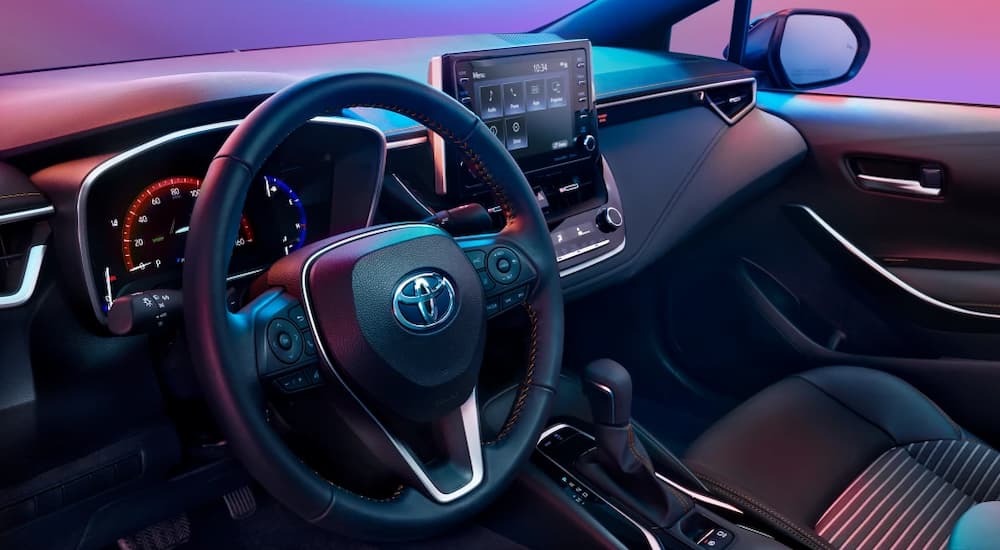Dear Toyota fans, you might not be happy about this, and I don’t blame you, but your favorite car manufacturer seems to be fumbling the ball a bit with some of their latest tech features. It started with their unwillingness to help out people with older vehicles that still use 3G communication technology, and now it’s extended to requiring a subscription to use the Remote Start function on your key fob (though that was always a thing, we’re just now realizing it). There’s no denying that Toyota vehicles are among the safest and most reliable models on the road, but they might start losing their loyal fans if they keep this up.
The Remote Start Kerfuffle
What’s going on, and how did we get here? The vast majority of Toyota fans and car owners have been blissfully enjoying everything their vehicle has to offer, which they should––Toyota is a great brand with safety and technology that’s hard to beat. And yet, little did we know that there’s been a ticking clock this whole time on one of the fundamental convenience features their vehicles have.
Someone recently noticed that the fine print on Toyota’s key fob functionality includes the following note: “Vehicles equipped with Remote Connect have key fob compatibility for Remote Start. Audio Plus vehicle key fob functionality is available for up to 3 years. Premium Audio vehicle key fob functionality is available for up to 10 years.” The details then stipulate that use beyond this initial period “requires a subscription” for the key fob functionality to continue for 2018 models and later vehicles.
In other words, when a new 2018 Toyota, or later, was sold, you could choose either the standard Audio Plus package or the available Premium Audio package, which set in motion a 3-year or 10-year service to use the key fob functionality, which is to say: Remote Start. Once that time is up, you’ll have to pay a subscription to continue to use that functionality. Since 2018 models started selling more than three years ago, this is something that’s starting to pop up for people – though folks who chose the Premium Audio package have more time before it becomes a concern for them.
So what’s the big deal? For starters, there’s absolutely no reason for this to be a subscription service. Toyota’s not involved in your key fob’s Remote Start functionality; there’s no signal being sent to a server somewhere or anything. It’s a radio signal sent directly from your key fob to the vehicle––so what’s the subscription for? You’re paying Toyota to let you continue using something you already bought. It’s only $8 a month or $80 per year, which probably won’t break anyone’s bank account, but the principle is certainly disconcerting. Most people don’t like paying a subscription to use what we already paid for, but that’s not going to stop corporations from trying to make it the new norm.
Failing Long-Term Customers
This weird subscription service key fob thing isn’t even the only way that Toyota is dropping the ball on their tech features at the moment. One interesting, and somewhat esoteric, bit of inside baseball going on in the tech industry is that mobile service providers have decided to end their support for 3G wireless technology. This kind of thing happens; as new standards become more widespread and supported, the older tech eventually gets phased out completely.
The problem with this, however, is that a lot of vehicles use mobile connectivity to get updates from the original manufacturer and for a wide range of other uses. When vehicles are made, they use the current or latest technology, so models made a few years ago (or longer) were built with 3G support, which they’ll no longer be able to rely on. This means the auto industry is in a bit of a scramble to deal with the 3G end-of-service, and different manufacturers are responding in different ways. Some are offering upgrades to more recent standards, not necessarily free of charge, but at least as an option to support their customers.
Toyota has decided to go a different way: they’ll not be offering any assistance or upgrades for customers, free or otherwise. Instead, they’re simply discontinuing support for their connected services on all vehicles that use 3G technology – select models from 2019 or earlier. So if you bought a Toyota just four years ago, they’re essentially telling you to take a walk when it comes to the connectivity features you paid for. Some might continue to work, others won’t––who knows, it’s not their problem.
The weird little footnote to this whole thing is that it’s actually forced Toyota to alleviate the subscription requirement for Remote Start key fob functionality for models built before the end of 2018. Since they won’t support their connectivity any longer, it would be difficult to require a subscription to use something you already paid for. As such, an update to models built before 11/12/2018 means that, to quote the statement from Toyota, “The logic has been enhanced to no longer require an active Remote Connect subscription for the key fob to perform remote start functionality.”
I’m not a software engineer, and I don’t work in auto industry IT support, but that phrase is absolute nonsense. They’ve “enhanced” the “logic” so that a subscription isn’t required to use the thing you paid for already. If this doesn’t perfectly illustrate the fact that the subscription only exists to fleece more money from their customers, then I don’t know what will. Maybe more examples of this grotesque new practice from across the industry?
Widespread Subscription Service Abuse
While I’d love to just bag on Toyota for this key fob subscription nonsense, it’s sadly far from an isolated incident in the industry. One of the most flagrant examples is how Mercedes-Benz recently required their German customers to pay a subscription for enhanced rear-wheel steering. The new EQS models feature a rear-wheel steering system that can turn up to 10 degrees; but customers in Germany only get 4.5 degrees of steering unless they pay a yearly subscription of more than $500 to gain the full 10-degree turning. There’s nothing physically different about their vehicles; they all have 10-degree functionality. Mercedes has simply locked the function behind a subscription fee––at least in Germany, here in the US, every model will have the full functionality (for now anyway).
Similarly, Cadillac requires a $25 monthly subscription to keep using their SuperCruise technology after the initial three-year trial period, even though you already have to pay $2,500 to buy the SuperCruise system in the first place. BMW tried to require a subscription for their customers to use Apple CarPlay––though the response to that was so vitriolic that they backpedaled on the decision, thankfully. That didn’t stop them from following it up with announcements requiring a subscription to use the heated seat function and other features that you already have to pay for when you buy the vehicle. See where this is going? It’s ugly.
One unique option is how Porsche is trying out subscriptions for some of its advanced safety features. On paper, I’m not a fan of this––but the one thing I’ll say in their defense is that it’s an extra feature that you get for free when you first buy the Porsche Taycan to try for several months. After that period, you can then pay a one-time upgrade cost to permanently unlock it or pay an ongoing subscription to keep using the features. It’s still paying more for something that’s already on the vehicle, but at least you’re not paying up front and then continuing to pay after. The evidence is still pretty clear: the auto industry is only getting started with subscription services, and Toyota is just the latest to showcase what they’ve been working on.






